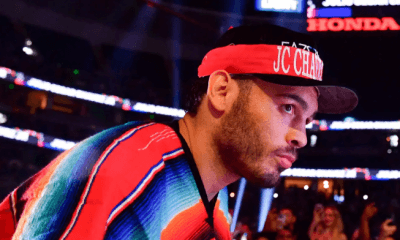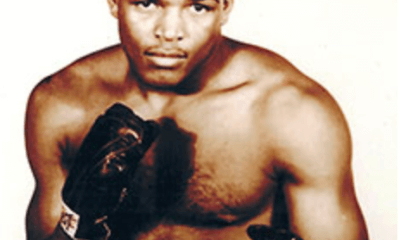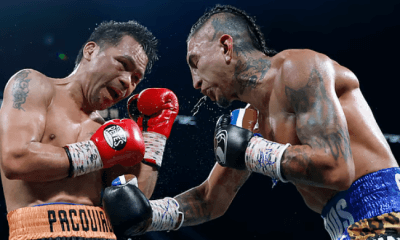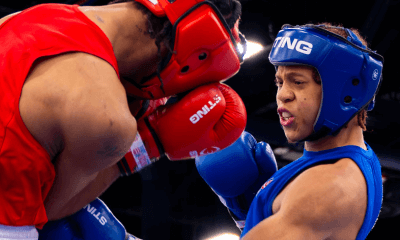Articles
More on Nevada’s Advance PED Tests for Bradley-Marquez
Executive Director Keith Kizer of the Nevada State Athletic Commission (NSAC) says the state’s first run at employing an advanced anti-doping testing program for a professional boxing event was a success.
“Much praise to SMRTL and its representatives,” Kizer said.
SMRTL, or the Sports Medicine Research and Testing Laboratory, is one of only two labs in the United States accredited by the World Anti-Doping Agency (WADA) to conduct human doping control sample analyses. There are currently 32 WADA accredited labs around the world. As first reported by TSS, the NSAC contracted SMRTL to conduct the advanced testing program for the October 12th Timothy Bradley vs. Juan Manuel Marquez bout at the Thomas and Mack Center in Las Vegas, Nevada.
Bradley defeated Marquez by split decision in the fight, 113-115, 115-113 and 115-112. The fight was aired on HBO PPV.
Kizer said each fighter was randomly tested four times (both blood and urine) during the NSAC program, and that Carbon Isotope Radiation (CIR) screening to detect the use of synthetic testosterone was done on half of the urine samples collected. No synthetic testosterone was discovered in either fighter.
In addition, Kizer said both urine and blood passports were assembled, giving the lab full-scale biological passports for each fighter.
“I’m not sure this has ever been done before,” he said.
Urine and blood passports detect variances in an athlete’s established biological markers rather than testing for specific illegal substances. The tests are designed to catch users of so-called undetectable PEDs by measuring changes in the physiology of athlete.
Kizer said all tests performed during the program were the latest and greatest recommendations of WADA “and then some” and included the CIR tests and biological passports as well as more common screens for things such as anabolic agents, peptide hormones, metabolic modulators, diuretics, etc.
The tests performed included screens for Human Growth Hormone (HGH).
Moreover, Kizer said actual measurements of testosterone to epitestosterone (T/E) ratios were captured for each sample, and that neither fighter’s T/E ratio was over 1.1:1 at any time. For reference, 4:1 is the acceptable T/E ratio according to WADA.
The PED testing issue between the Bradley and Marquez camps was a hot topic right from the start. The bout was previously considered in jeopardy due to preferences in both camps for different anti-doping programs.
Marquez reportedly preferred using the United States Anti-Doping Agency (USADA) program, which also administers tests for U.S. Olympic athletes, while Bradley preferred using the Voluntary Anti-Doping Association (VADA) program, a group founded by ringside expert Dr. Margaret Goodman and considered in some fight circles to be the most advanced of its kind.
As a compromise, advanced PED testing for the bout was paid for by Bob Arum’s Top Rank Promotions and handled by the NSAC.
Previously, Kizer would not relate any more specifics about the advanced testing program being administered through the NSAC and conducted by SMRTL other than to say “any and all tests” were possible.
“Obviously, I’m not going to give any details while the testing is on-going,” said Kizer back in August after the tests began. “I’ll be happy to discuss in detail after October 12.”
Kizer said he did not believe PED testing programs should be discussed in detail until after the program has ended.
“It is not uncommon to not talk too specifically about on-going testing,” Kizer answered. “It could affect the efficiency of the testing, and it is not fair to the athletes being tested.”
In addition to being tested by the NSAC, Bradley also re-enrolled in a VADA program through October 12.
Information provided by the Marquez camp as well as USADA confirmed their fighter could not enroll in a similar standalone testing program with their preferred provider because USADA would not conduct a testing program while another organization (other than the boxing commission) was testing one or both fighters.
In total, each fighter submitted four urine tests and four blood samples under the NSAC program, and no abnormalities were found. When asked how the program compares to those administered by USADA and VADA, Kizer declined to comment.
“I will leave that to you,” he said.
-

 Featured Articles2 weeks ago
Featured Articles2 weeks agoResults and Recaps from New York Where Taylor Edged Serrano Once Again
-

 Featured Articles1 week ago
Featured Articles1 week agoResults and Recaps from NYC where Hamzah Sheeraz was Spectacular
-

 Featured Articles2 weeks ago
Featured Articles2 weeks agoFrom a Sympathetic Figure to a Pariah: The Travails of Julio Cesar Chavez Jr
-

 Featured Articles2 weeks ago
Featured Articles2 weeks agoPhiladelphia Welterweight Gil Turner, a Phenom, Now Rests in an Unmarked Grave
-

 Featured Articles2 weeks ago
Featured Articles2 weeks agoCatterall vs Eubank Ends Prematurely; Catterall Wins a Technical Decision
-

 Featured Articles3 days ago
Featured Articles3 days agoManny Pacquiao and Mario Barrios Fight to a Draw; Fundora stops Tim Tszyu
-

 Featured Articles4 weeks ago
Featured Articles4 weeks agoMore Medals for Hawaii’s Patricio Family at the USA Boxing Summer Festival
-

 Featured Articles1 week ago
Featured Articles1 week agoFrom the Boondocks to the Big Time, The Wild Saga of Manny Pacquiao’s Sidekick Sean Gibbons











